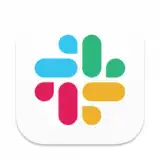- IChat (previously iChat AV) is a discontinued instant messaging software application developed by Apple Inc. For use on its Mac OS X operating system. It supported instant text messaging over XMPP / Jingle or OSCAR (AIM) protocol, audio and video calling, and screen-sharing capabilities.
- The Default and only Instant Messing or 'IM' application ('app') shipped with the 'Macintosh OSX' Operating system. IChat can connect to '.Mac' - A serive offered by Apple, AOL's 'AIM' and a few others. There was a cloned version of iChat for Windows in the past, but.
- How do I block users I don’t want to chat with me on iChat? » Chat & Conferencing » Mac » Tech Ease: You can block a contact at any time by selecting it in the Buddy List and then selecting Buddies, Block (which will be followed by the user name your are blocking). If you choose to block a contact, that contact will not be able to see your online status or send you chat messages.
- What if iChat had this feature which allowed you to interact with each other.
Free Chat Rooms Without Registration. Join hundreds of chat rooms without registering first. Take your privacy into your hands and chat anonymously in our random chat rooms. Enter various group chats, create your own and share it with your friends.
iChat was an instant messaging software application developed by Apple Inc. It supported instant text messaging, audio and video calling. It also had screen-sharing capabilities and allowed for local network discussion with users discovered through Bonjour protocols. The app was replaced by Messages in OS X 10.8 Mountain Lion and later releases.
Contents
- 1 iChat – Apple instant messaging software application
iChat – Apple instant messaging software application
iChat was released in August 2002 as part of Mac OS X v10.2. It was the first officially-supported AIM client that was native to Mac OS X and it was integrated with the Address Book and Mail applications. iChat used speech bubbles and pictures to personify the online chatting experience.
iChat AV

In June 2003, Apple announced iChat Av, which added video and audio conferencing capabilities. In February 2004, Apple released a public beta of iChat AV 2.1 to allow Mac OS X users to video conferencing with AIM 5.5 users. In June 2004, Steve Jobs announced the introduction of iChat AV 3, which provided additional support to allow up to four people in a single video conference and ten people in an audio conference. That version of iChat used the H.264/AVC codec, which offered superior quality video compared to the older H.263 codec used in previous versions. In October 2005, the 3.1 version received support for encrypted communications for paid subscribers of .Mac (now iCloud) service. The 3.1 version also added support for XMPP multi-user chat. In March 2007, Apple released the Mac OS X v10.4.9 update. This time the app added the capability to use USB video device class (UVC) cameras to be used with iChat, rather than FireWire cameras only. This allowed a wider range of cameras to be used with iChat AV.
iChat 4
Being a part of Mac OS X v10.5, iChat 4 was equipped with new features including: iChat Theater, Backdrops, and Screen Sharing. Chat Theater allowed users to share any file supported by Quick Look, including photos, Keynote presentations, and movies, over a video chat session. Backdrops was used to insert movies or photos as a backdrop in video chats. Screen Sharing allowed two users of Mac OS X Leopard to have control of the same desktop. Other features in the new release included multiple logins, animated icons, use of Photo Booth effects in live video chat, and tabbed chats.
iChat 5
iChat 5.0, released with Mac OS X v10.6, reduced the bandwidth required for 640×480 video chats. It also upgraded Theater to 640 x 480 pixels.
iChat 6
iChat 6.0 was released with Mac OS X v10.7. It added support for Yahoo Messenger account and allowed users to have text, voice and video chats using their Yahoo Mail accounts. It supported third-party plugins. iChat 6 was the last version, as in OS X Mountain Lion, it was replaced by Messages. The final release, 6.0.1, was published on February 1, 2012.
Miscellaneous
iChat’s AIM support was fully endorsed by AOL, and used their implementation of the AIM OSCAR protocol.
Using a XMPP transport, chat could serve as a client for AOL Instant Messenger, Yahoo! Messenger, MobileMe, ICQ and XMPP. The app could also integrate Google Talk contacts into the XMPP pane.
Using the feature, the user could copy a still image from either an iSight or other webcam by pressing the Command Key + C, when in chat. The user could then paste the image by using the Command key + V into another application or location.
Links
- You want to switch to a new model but don’t have enough means? We at iGotOffer help you save money for your new purchase. You can sell old electronics to us, we pay the best price online.
Overview
USF offers a variety of online resources and tools for students, faculty, and staff to stay connected to the university. Check MyUSF or reference the links below for some of the most popular options.
The USF IT Service Desk provides support for MyUSF, email accounts, workstations (Windows and Mac), connecting remotely to USF resources, business systems and more.
Contact them by Live Online Support at itchat.usf.edu, emailing help@usf.edu or by calling (813) 974-HELP (4357).
Student Remote Resources
Ichat Singapore Poly

Ichat.sp.edu.sg
Faculty Remote Resources
Staff Remote Resources
